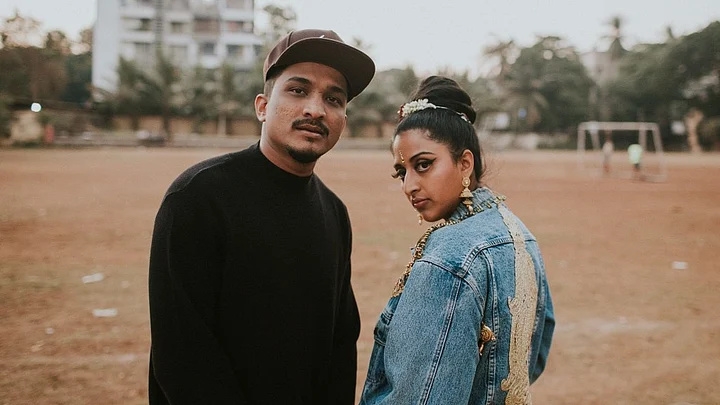There’s much buzz about the Indian hip-hop scene that’s coming from the gullys and speaking to the disenfranchised – and making it big in the mainstream.
The latest track to be dropped in the fray is by rappers Divine, from Mumbai, and Raja Kumari, from California, called ‘Roots’. In it, Divine raps about common themes in desi rap – the struggles of coming up from the streets.
Then, in Raja Kumari’s verse, she raps the lines “Untouchable with the Brahmin flow” and reduces what could have been an interesting song into an elitist, casteist mockery.
The fast-emerging power of gully rap – desi rap and hip-hop from the streets –lies in its authenticity and representation of real, working-class struggles. It has become a movement to empower people shunned to the margins with its politically aware lyrics – with rappers like Naezy, rap group Dopeadelicz and Divine rapping about the hustle and grime of street living, police brutality, political apathy among other things. By crafting together socio-political commentary and catchy beats, these artists have managed to propel the street hip-hop scene into a force to be reckoned with.
So when Kumari talks about Brahmin-Savarna superiority it’s not just insulting to a majority of the consumers but also begs the question: who is she rapping for? The same people whose struggles she speaks about are not the ones she is still catering to. And with a BA in religious studies and South Asian religions, she can’t possibly be ignorant about caste oppressions, and so her choice of lyrics then reveals something more insidious – apathy.
Gimmicks and One-Sided Views of India
In an interview with Rolling Stone India, she says, “I’m tired of people picking up pieces of our culture like a costume and a gimmick.” As an Indian-American, her traditional jewelry aesthetic in her videos and her staging her videos in Indian slums seems more exploitative than appreciative. In a genre like rap that is ripe with politics not just in its content but also in where it’s coming from, it's pretty problematic when a diaspora Indian appropriates homeland street struggles and realities as a selling point. Claiming to be from the street is not just inauthentic, but when using street struggles to make yourself seem ‘grittier’ it’s fetishising – almost like using the poverty and hustle of the gullys as a “costume or gimmick”.
Kumari has often said she likes to be the “the bridge between East and West”. Growing up in America with a lack of representation of South Asians in hip-hop, her videos like ‘I Made it’ and ‘Believe in You’ are powerful fusions of Bharatnatyam dance moves and hip-hop beats. But diaspora Indians and homeland Indians (Indians born and raised in India) have very different lived realities.
Gully rap burst into popularity because it offered a fresh, authentic voice of the underrepresented. Perhaps Kumari was under-represented in America, but in India, as an upper-caste, NRI woman her oppressions and privileges have changed.
In India, there are so many different constructs of inequality specific to our country, and foreigners (even ones of the same ethnicity) carry a certain privilege and often have easier access to more opportunities. If that inherent power isn’t looked at and considered, it could lead to exploitation and misrepresentation. For example, diaspora Indians, especially Hindus, often have a connection with India through a specific, religious lens, as seen through the religious motifs in Kumaris videos. But India is not just Hindu, and not examining this tenuous connection can lead to several problematic religious and casteist assumptions about the homeland.
This is not to disparage Raja Kumari or even say that gully rap is the only type of desi rap that exists, but to look at the privilege of different artists within the genre and who is getting the mic. In a Twitter chat with the Godrej India Culture Lab, Deepa MC said, “In a country like India, people in cities are often very privileged and I understand why I'm not a part of the 'gully' rap scene.”
Hip-Hop From the Ground up
Rap has historically been a musical form of dissent when black artists in America used it to protest racial discrimination. So it only makes sense that the Indian version of this would be class-conscious and politically aware.
Another rapper that has been in the news for rapping about caste has been Sumeet Samos. Unlike Kumari, he punches back at the system in his upcoming anti-caste music video ‘Ladai Seekhle’ that talks about young Dalits dealing with – and resisting against – the oppressions and discriminations of everyday casteism.
(The author is an independent journalist and tweets at @DevinaB21. This is an opinion piece and the views expressed above are the author’s own. The Quint neither endorses nor is responsible for the same.)
